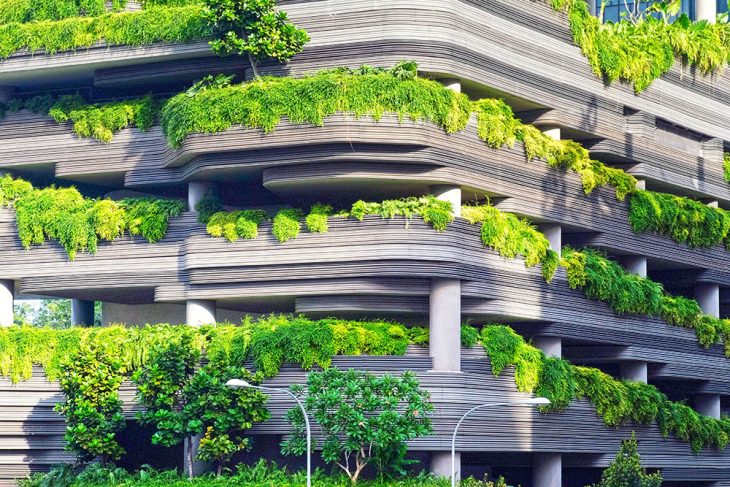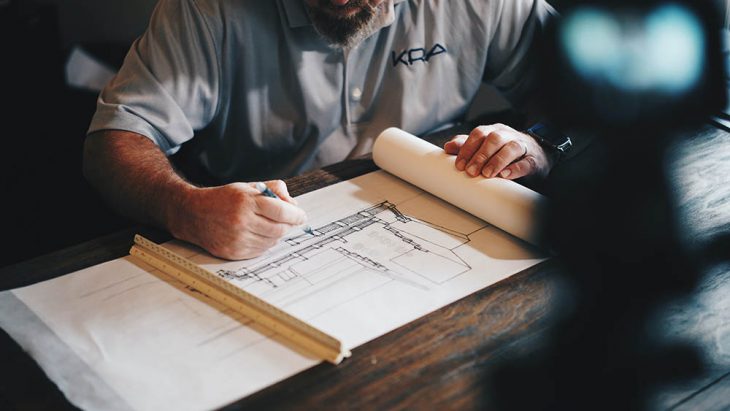
Waste management and clean waste disposal are burning questions in 2021. In fact, more and more branches of the economy are adopting zero waste policies across the board. Recently, the concept of circular economy has been picking up speed, and manufacturers and retailers across the globe are implementing it. But can it be applied to architectural design, and more importantly, can it be done well?
In this article, we will go over different ways on how we can rethink architecture in order to promote a zero-waste lifestyle. More importantly, we will focus on what architects and builders should specifically focus on.
But before we move on with that, let’s take a quick look at what a circular economy is and if architects can implement it successfully.
What Is Circular Economy?
Circular economy is the system that aims to eliminate as much waste as possible throughout the ‘life cycle’ of a product. In other words, it focuses on cleaner production, use, and elimination of products. To put it simply, no materials become wasted and every single element has some value.
For example, if we apply circular economy to manufacturing, we will focus on the following:
- While in the production phase, the factory reuses old raw materials and recycles them as much as possible
- Very little (if any) fresh raw materials are used
- In addition, the product packaging is made from recycled cardboard or wood
- Once the product reaches its end, we break it down and reuse its components
There is a reason experts call this process circular. Every step is interconnected and it never really ends. Unlike the current take-make-consume-waste model, it focuses on reusing and repurposing everything, as much as possible.
Applying such a system would both save the environment and reduce the amount of construction waste. Major cities like New York already have plans to send zero waste to landfills through green urban design. The project is quite ambitious and New Yorkers aim to achieve their goal by 2030. In addition, architects across the world are already thinking of new and interesting ideas for zero waste buildings.
So, how do we apply circular economy to architectural design, exactly? Well, it all comes down to four words:
- Rethink
- Reduce
- Reuse
Rethinking the Field
Zero waste designing and building take a lot of planning and effort. Sometimes, the guidelines are not that simple. Luckily, there are plenty of interesting ideas out there for sustainable design for anyone to check out.
When you’re at the planning phase, you need to rethink almost everything. For instance, think about the usage of space, different aesthetic choices, use of materials, and making informed decisions based on the location. One such idea involves incorporating local used materials. That way you can cut down import and transport expenses, as well as expenses for brand new materials. In addition, check which items are:
- Environmentally friendly
- Long-lasting
- Don’t have an impact on the local environment
Reduction
Reducing is essential if you want to focus on zero-waste design. Normally, that would mean reducing the number of raw materials used, such as concrete, plaster, glass, steel, etc. In other words, you need to forget dense, hefty structures. Instead, focus on lightweight systems which do not require a lot of raw materials. Moreover, consider what materials will last longer or might have a lower carbon footprint.
Reduction can also refer to the urban space itself. The vast majority of people live in big cities. Furthermore, cities spend more than 80% of total energy. So, by reducing the size of the urban area, we can greatly improve the lives of people living there. Some benefits of compact cities with reduced urban space include:
- Concentration of knowledge and business opportunity
- Concentration of diversity
- Better infrastructure
- Efficient transport systems
Reuse
There are two separate ways of thinking about reuse that architects should consider:
- Reuse of different parts of a building
- Reuse of the building as a whole.
Generally speaking, there are various elements of a single structure that the builders can freely reuse. Usually, that refers to materials such as solid wood or metal, but sometimes it can include entire elements. For example, you can reuse glass, coatings, structural steel parts, or partition walls. As long as the element is in good shape, it can find a new purpose in a different building project.
On the other hand, there are times when we don’t really need to demolish a building, but simply refurbish it a bit and reuse it for a different purpose. Let’s say that you have an empty factory. With some minor restructuring, it can become a neat hotel or a museum, or even an art gallery. The same goes for old hotels, office buildings, garages, etc. It’s all about using the space in the best way possible while saving money and reducing waste in the process. In fact, current architects are also considering different methods of designing multi-purpose buildings that owners can easily convert into anything they want after a few decades.
Recycling
Recycling is fairly straightforward; we take old raw material from a decaying or demolished building and process it in order to make new material. That can include anything from concrete, plaster, metal, glass, wood, bricks, and so on. And interestingly enough, architects and builders have been doing that for decades now and even have a name for that practice — urban mining.
Naturally, urban mining doesn’t simply refer to gathering raw building materials. In fact, it also covers the recycling of old electronics, such as TVs, smartphones, computers, and other hardware. If you were to recycle old materials instead of ditching them to a landfill and getting new ones, you stand to save a lot of money. But more importantly, you will manage to finish your project while producing almost no waste in the process.
Final Thoughts
As with all things, applying zero-waste policies to architectural design takes a lot of time and effort, as well as careful planning. And if more architects around the world accepted the methods outlined in this article, we might just see a massive decrease in construction waste in the decades to come.





